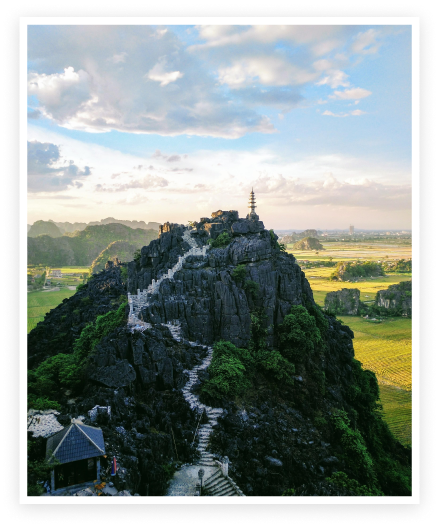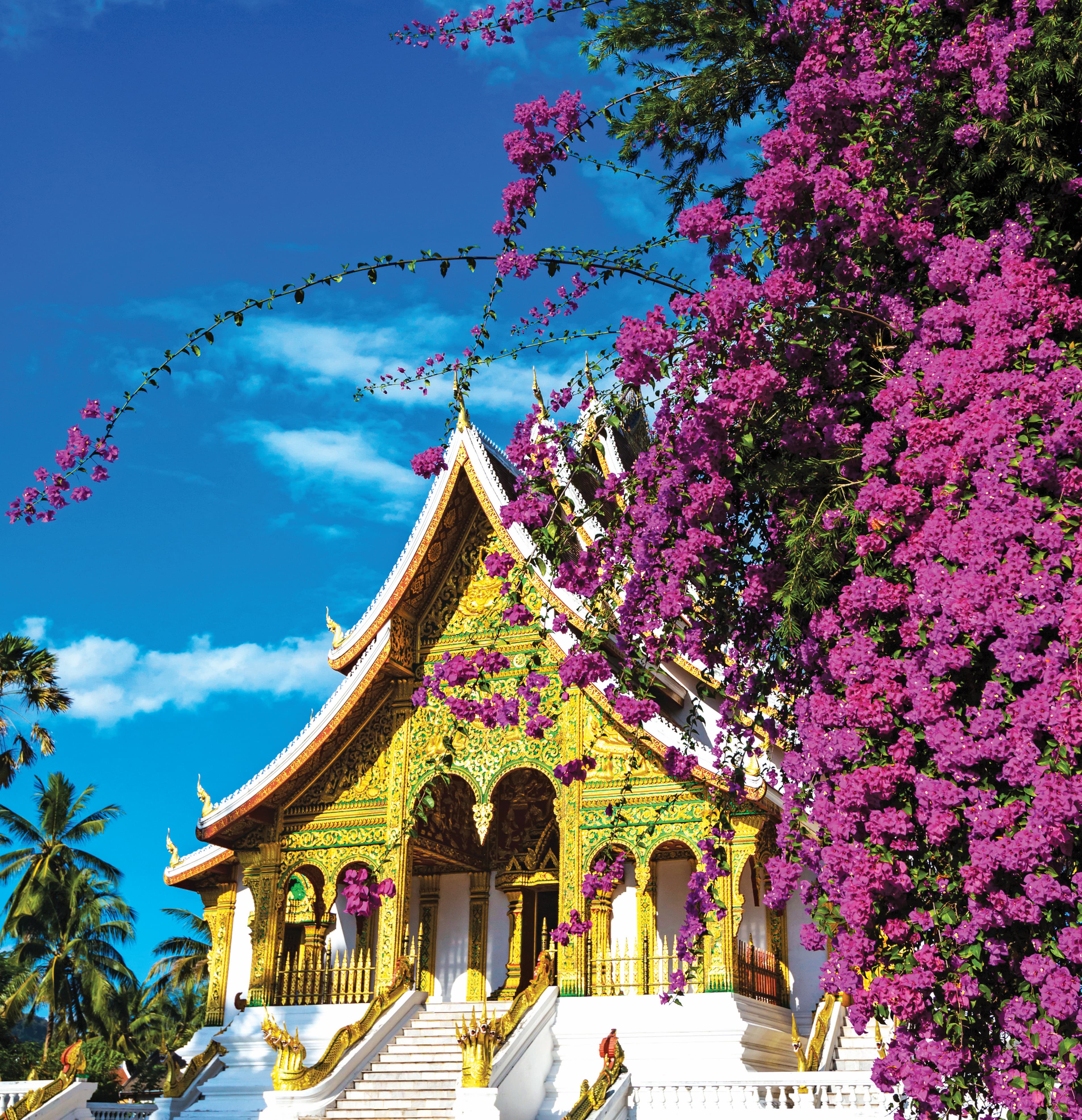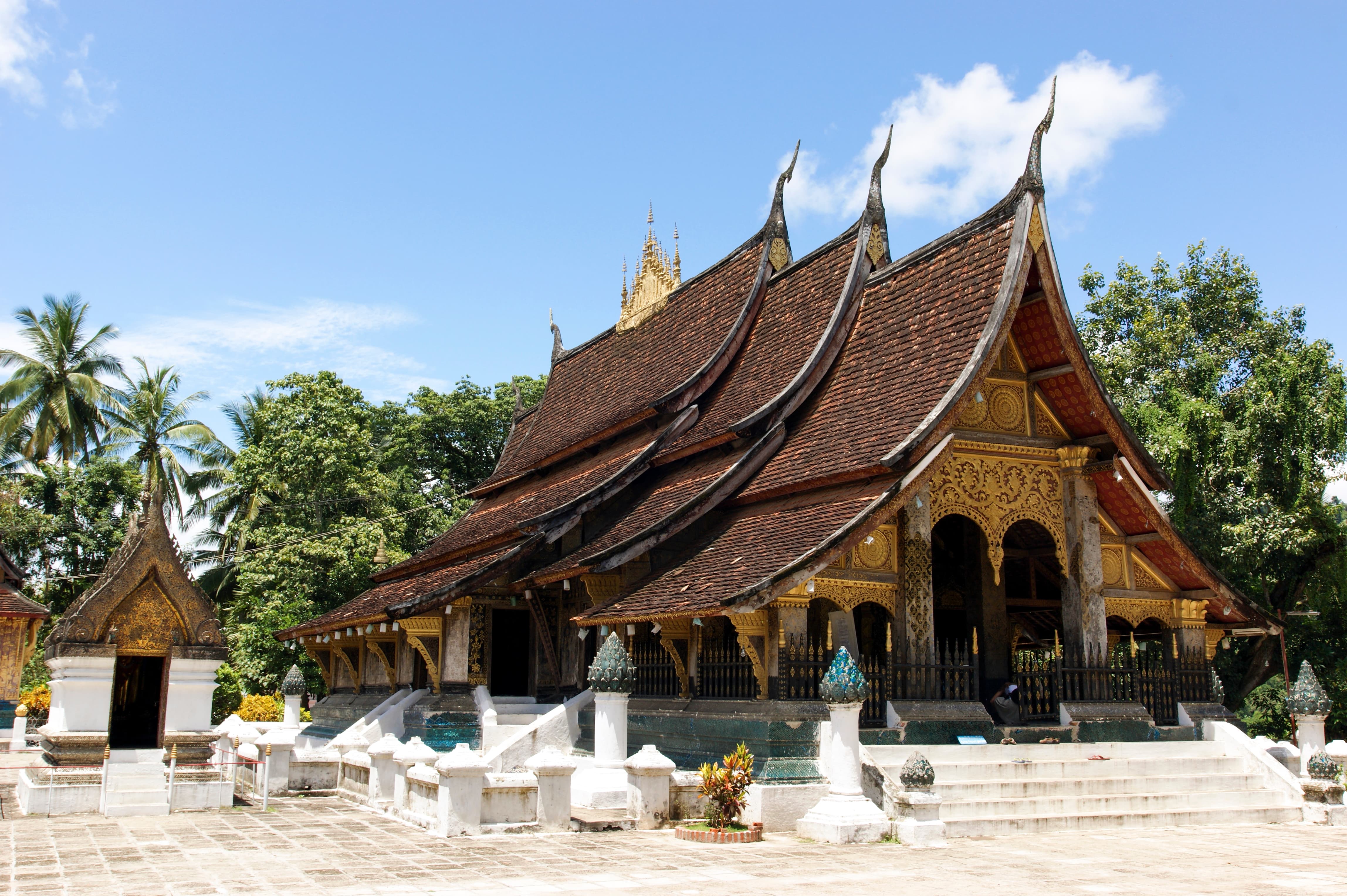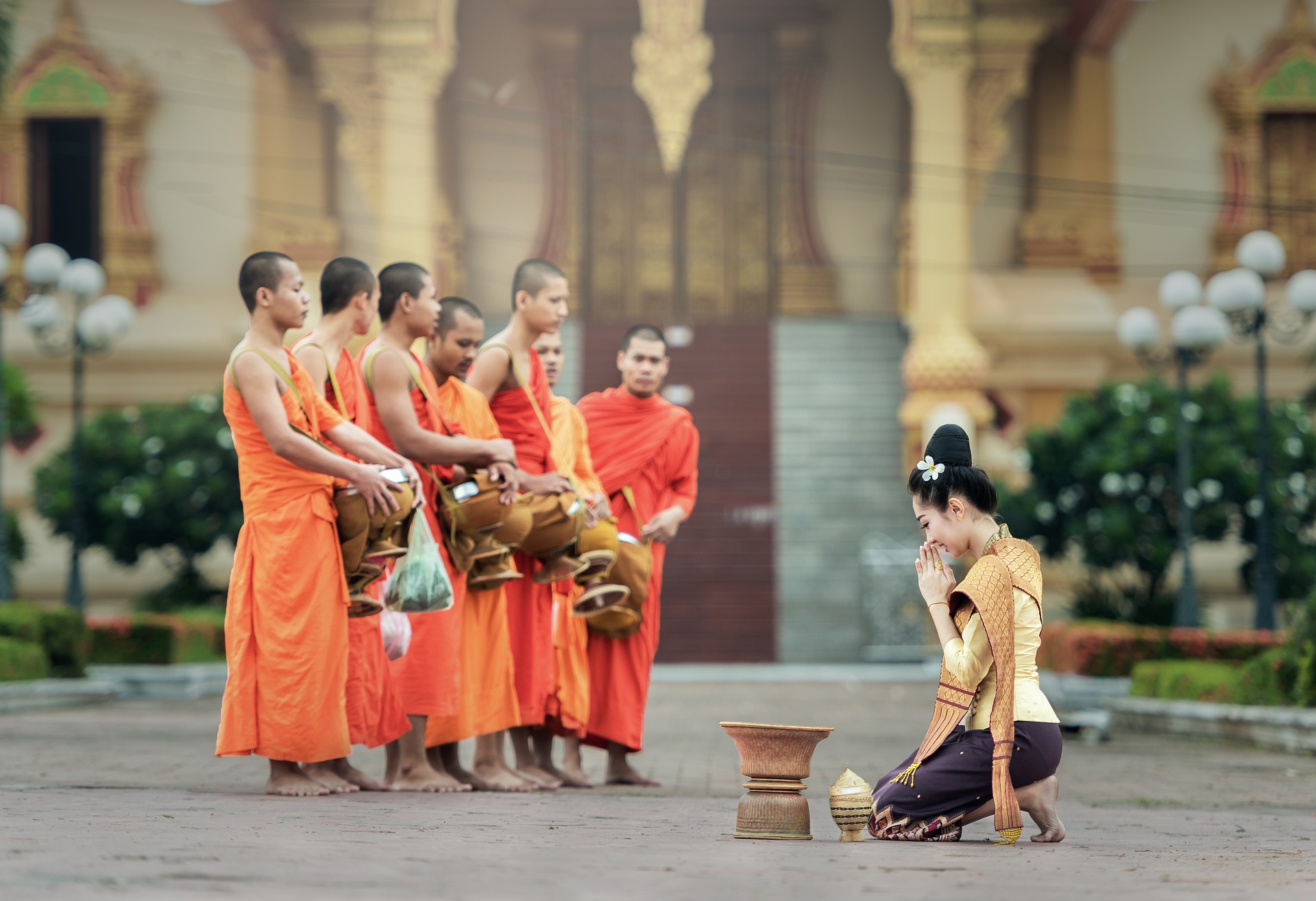Often overlooked in favor of its better-known neighbors, landlocked Laos remains one of Southeast Asia’s most beguiling destinations. Caught in the middle of the two Indochina wars and long isolated from the rest of the world, the country retains a slow, rather old-fashioned charm, and its people – incredibly laidback and friendly, even by Asian standards – are undoubtedly one of the highlights of any visit.
.png)
WHY
LAOS

.png)
Nature
Laos offers no sea plages, but incredible mountain landways and waterway to get you close to nature where greenery and poetic rivers are spread endlessly. Being the most sparsely populated country of Asia, Laos is apart from noise and boisterousness. This is the old Asia ''once upon a time'' of elephants, jungle, falls, rivers, lakes, fresh fishes and superb ancient temples.
.png)
History
Caught in the middle of the two Indochina wars and long isolated from the rest of the world, Laos retains a slow, rather old-fashioned charm, and its people – incredibly laidback and friendly, even by Asian standards – are undoubtedly one of the highlights of any visit.
.png)
Culture & diversity
Laos’s lifeline is the Mekong River, which runs the length of the country. The rugged Annamite mountains historically have acted as a buffer against Vietnam, with which Laos shares its eastern border. Despite its small population, Laos has no fewer than 68 ethnic groups. Colorfully dressed hill tribes populate the higher elevations, while in the lowland river valleys, coconut palms sway over the Buddhist monasteries of the ethnic Lao.
.png)
Architecture
Lao architecture is mainly a mix of French colonial, Buddhist (in temples), traditional Lao and modern architecture, with some influences from Thailand and other countries. There are three distinct Lao styles of temple design: Temples in Luang Prabang have low, sweeping roofs that almost touch the ground, Vientiane with temples features a veranda and a heavily ornamented roof, while the Xieng Khuang style melds features of both Luang Prabang and Vientiane styles.
.png)
Food
The country's cuisine reflects the comparable crops prevalent in the greater region. 90% of the Lao people's meals are sticky rice. The basket in which the rice is served is called tikao or kongkao and is portable. Laotian cuisine is distinct from other Southeast Asian cuisines and has many regional variations, corresponding in part to the fresh foods local to each region.
.png)
REGION
1
JAN
2
FEB
3
MAR
4
APR
5
MAY
6
JUN
7
JUL
8
AUG
9
SEP
10
OCT
11
NOV
12
DEC
VIENTIANE












luang prabang
/ north region
/ bolavens trail












pakse and
south region












AREA:
237,955
km2POPULATION:
6.5
million(2015)
CAPITAL:
VientianeMAIN TOURIS DESTINATIONS:
Luang Prabang, Vientiane, Vang Vieng, Xieng Khoang and Southern LaosCURRENCY:
Kip (LAK)LANGUAGE:
Lao, Hmong, KhmuRELIGION:
BuddhismCOORDINATES:
11° 59' 16.68'' N; 104° 58' 50.21'' EELECTRICITY:
Between220 - 230
Volt50 Hz
TIME ZONE:
GMT+7
HoursVisa for Laos
The VOA is valid for a single entry of 30 days and may be extended by an additional 60 days. Alternatively, most nationalities are also eligible to apply for a tourist e-Visa online to avoid long queues when entering the country. All visa applications require a passport with six months validity and an empty page, as well as two passport photos and visa fee in cash (amount depends on nationality). As travel policies change regularly, it’s best to check the official government website for the latest regulations before visiting.
Best time to visit
Laos only has two distinct seasons—dry and wet—and during the rainy season, which lasts from May to October, many people are genuinely content to remain there.
Accepting some moderately heavy rain, typically in the afternoons but perhaps not for any extended periods, will be necessary.
The benefit of visiting during that time is that there are less tourists and prices are lower. The Mekong River can flood occasionally, especially in the months of July and August.
Dress code in Laos
All guests are required to adhere strictly to the Royal Palace's rigorous and temple dress code, which calls for conservative attire. Please cover up before entering if you are a man or woman wearing shorts or a short skirt.
Emergency contact
If there is an issue, you should, if possible, get in touch with your Embassy. This is especially true for situations like passport loss. Due to the low salary of police, obtaining a report may require filing an insurance claim, possibly paying a bribe, and having a translation on hand since few police officers will be able to speak English. Clearly, urban regions with higher access to healthcare than rural locations include Vientiane and Luang Prabang. Get a list of crucial phone numbers for the areas listed on your itinerary.
Safety in Laos
Laos is a generally safe country, and reports of travelers experiencing any physical issues are extremely rare. Be on the lookout for pickpockets and always keep any expensive electronics and documents in a safe location because pickpockets may appear in well-known tourist spots.
Do and don’t in Laos
Visitors may be recommended to bring any necessary basic medications and prescription medications since Laos only offers basic healthcare. If you abide by some ground rules and show respect for the local religion and culture, you may anticipate finding a reasonably laid-back atmosphere.
Do
- Recognize the standard greeting.
- In any religious setting, dress modestly. If in doubt, wear modest clothing regardless in case your plans alter throughout the day.
- In the presence of a Buddha and monks, slightly bowed.
- When entering a residence, remove your shoes.
- When offered food or water, accept it even if you're not hungry or thirsty.
- Exercise patience since certain things take time.
Don’t
- Ever touch a Lao person's head.
- Always wear modest clothing
- Drink tap water; there is also access to plenty of bottled water.
- Drink too much; it's disrespectful.
- Touch a Buddha or turn your back on it in disobedience.
- Throw trash everywhere.
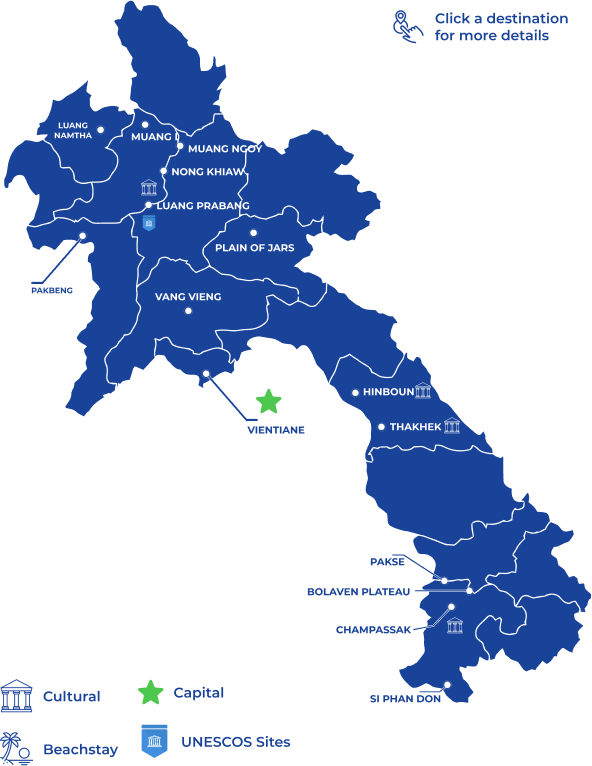
.png)
VIENTIANE
Located in the Northwest of Laos, Vientiane is the capital as well as the largest city of Laos. Compared to the hectic, bustling capitals in other Southeast Asian countries, Vientiane is known for its laid back atmosphere. The city presents a valuable, long-standing Laos with ancient, golden relics, mystic stories related to Buddhism and Hinduism, historic religious beliefs and mixed Lao-France architecture with Laos sculptures. It’s the most attractive destination for those who enjoy a peaceful, relaxed vibe. Even though in Vientiane the days blend into one another, once you leave, you’ll miss this place more than you expected. Just apart from Thailand by a bridge over Mekong River, Vientiane is still a border-gate, from where you will leave behind the developed, hectic, modernized 21st-century world to deep yourself into a laid-back atmosphere and slow pace of life that you may have always wished for. With very few traffic jams, noise or rush hours, Vientiane presents a valuable, long-standing Laos with golden relics, solemn pagodas, and crowded but elegant streets and boulevards.
.png)
Visit Theravada pagodas; attend annual Pha That Luang Festival in October.
.png)
Take Vientiane as the departure to the elephant feeding center at Phu Khao Khuay National Protected area, or to Vang Vieng and the Plain of Jars.
.png)
Walking, biking or taking tuk tuk to enjoy the peaceful atmosphere around the city and visit the central temples.
.png)
Taking place at dyes class or visiting Lao Textiles workshop, studio and gallery creates woven art.
TRENDING NOW
RECOMMENDED TOUR
Contact Us
Drop A Message
